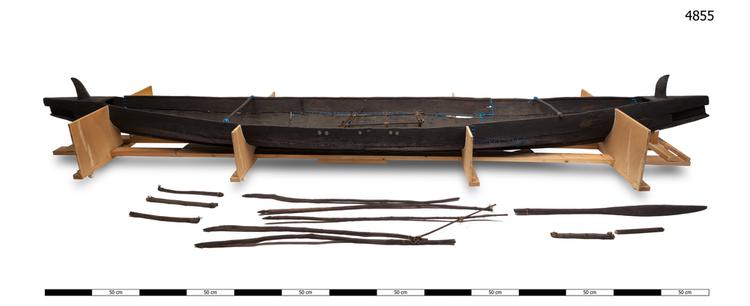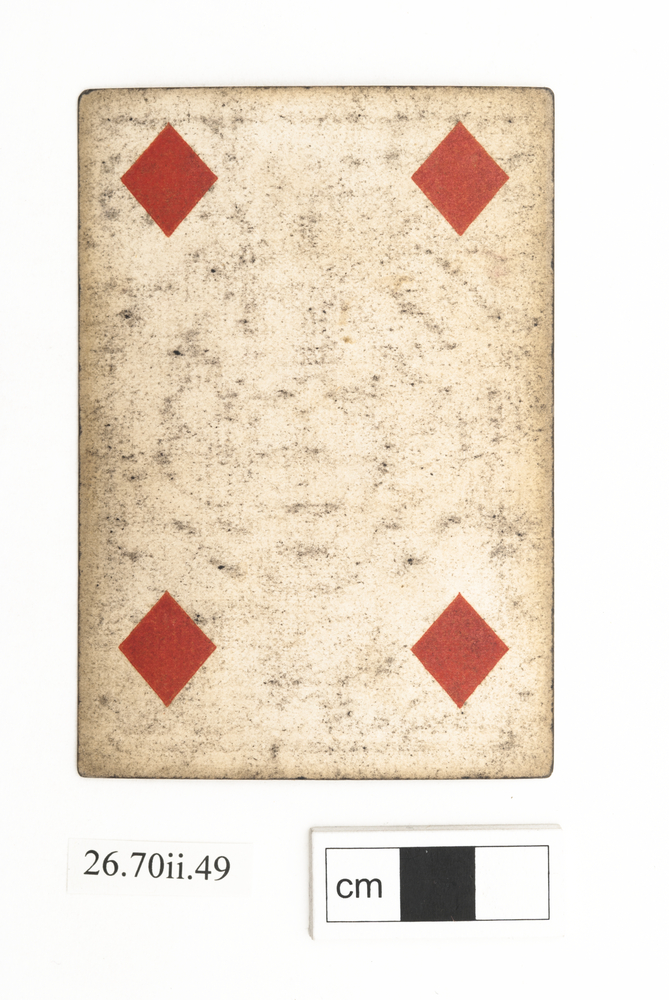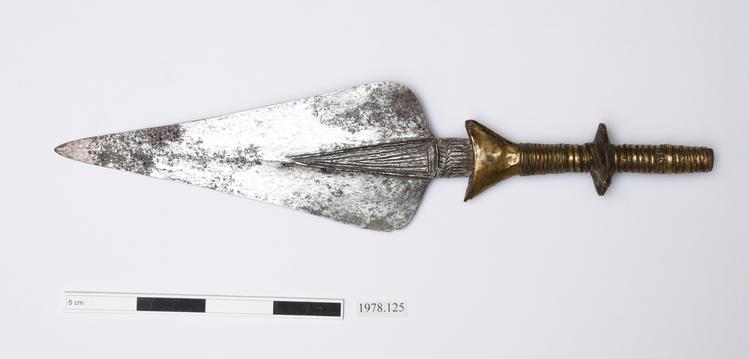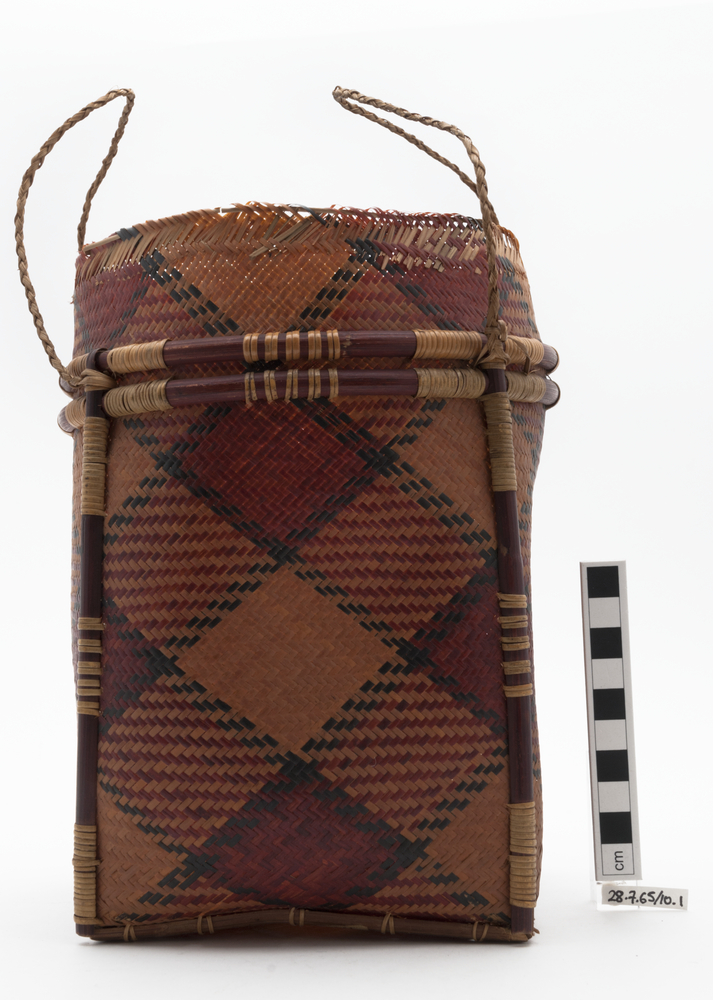
Single hulled outrigger canoe with steering paddle. The canoe is constructed using a plank built method and comprises a running keel piece and two courses of planks on either side. The planks are drilled through at 3 – 5 cm intervals along all the touching edges, and tied with coconut cordage. Between the planks, strips of pandanus leaf have been inserted prior to tying together, to act as a caulk once the boat is in the water. The canoe is braced fore and aft at the quarter length points and bears symmetrical prows, uniting both walls in a single block of wood. Both prows are ornamented with a thickened shark-like fin. The outrigger is formed in the Polynesian/Micronesian style using natural forks from saplings, mortised into the outrigger itself, which are then braced longitudinally and transversely to make a rectilinear cage. This is then attached to the canoe hull itself with five spars, which pass through one side of the canoe; five are below the upper rail. These cross spars were formerly tied into the opposite side of the canoe by means of coconut fibre cordage passed through a triangular set of three holes in five places. These five places are arranged in two pairs, 730 mm apart, with a single spar running equidistant between them. These spars were themselves braced in some way using three or more cross pieces, although the former arrangement cannot be deduced under access conditions in 2011.






